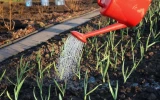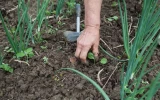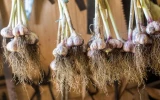What Is the Best Garlic to Grow in Melbourne?
Garlic cultivation in Melbourne is optimal due to its Mediterranean-like climate, with the city experiencing an average of 603mm of rainfall annually, fostering favorable growth conditions. Some garlic types benefit from Melbourne's distinct seasons, requiring cooler winter temperatures to initiate clove formation and warmer summer days to mature.
The best garlic varieties for Melbourne include 'Australian White,' 'Italian Late,' and 'Rojo de Castro,' suitable for the city's temperate climate. Planting should occur in late March to May for optimal growth. These varieties are well-adapted to Melbourne's weather patterns, offering robust flavors and reliable yields.
The secret to success lies in choosing the right time for planting. You'll want to plant your garlic cloves during the cooler months, when soil temperatures drop to around 10 degrees Celsius. But here's the kicker: Melbourne's weather can be a bit unpredictable, so providing some protection against sudden temperature changes can make a huge difference.
Summary
- Surprisingly, garlic in Melbourne benefits from well-drained soil and plenty of sunlight, making balcony gardens and small urban spaces potential gold mines for this robust crop.
- Garlic in Melbourne should be planted 2–3 inches deep and spaced about 6 inches apart, ideally from March to May, to ensure good root establishment before winter and robust growth in spring.
- Care across all varieties includes monitoring for pests, ensuring proper watering without waterlogging, and curing harvested garlic for longevity, with options for planting in pots to accommodate limited space.

On this page:
Australian White
Australian White is a popular softneck variety of garlic that you can grow in Melbourne. It's known for its large and plump cloves, and is a great vegetable to grow for both culinary and storage purposes.
Planting requirements
When starting, plant garlic from a clove, making sure to choose the biggest and healthiest cloves from your Australian White bulbs. Prepare a weed-free area with rich soil containing organic matter like compost or manure. Garlic cultivation requires well-drained soil to prevent issues like white rot.
| Key Tips | Description |
|---|---|
| Planting depth | Plant cloves pointy end up, just below the soil surface |
| Spacing | Keep cloves about 15cm apart to ensure bulb development |
| Watering | Maintain moist soil for healthy growth; don’t overwater |
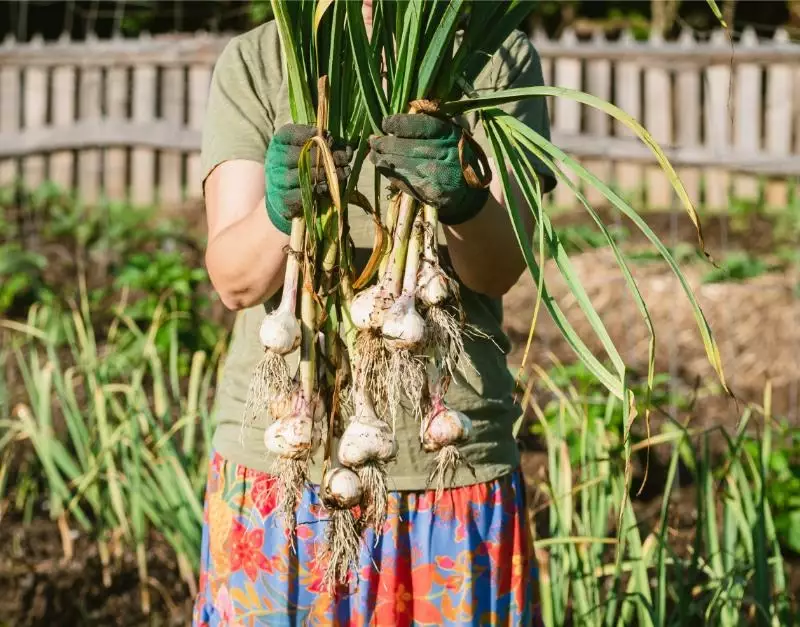
While garlic from a clove usually doesn't produce scapes, you won't need to worry about this with Australian White since it's a softneck variety. Softneck varieties generally cope better with warmer climates and are hardier compared to hardneck garlic types.
Care tips
After the garlic has maturely grown and the leaves start to turn brown, it's time to harvest your homegrown garlic. Curing garlic is essential for longevity, allowing them to develop a papery outer layer. Store them in a cool, dry place where they can last for months, providing you with a lasting supply of flavorful garlic for your cooking needs.
Keep an eye out for pests such as aphids during the growing season. A disease-free and robust garlic plant is more resilient and results in a healthier crop.
How long does your garlic take to grow? Find out here.
Italian Late
Known for its hot and rich flavor, Italian Late is a favorite for those who love a bit of zing in their cuisine. This garlic is adaptable to diverse climates, thriving in southern Australian conditions, particularly in Victoria.
Planting requirements
When you plant Italian Late garlic, aim for the cooler soil temperatures of March to May. This aligns with the optimal growth conditions, ensuring your cloves have enough cold to stimulate bulb development.
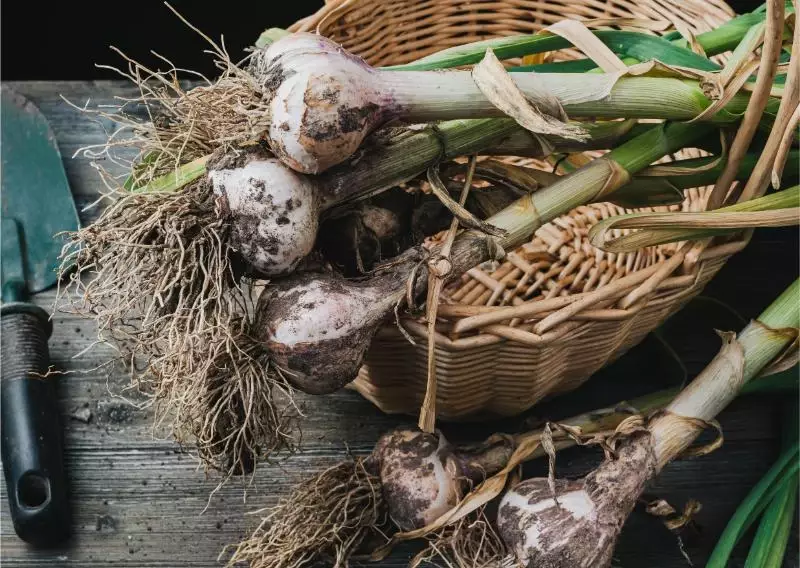
A soil temperature around 10 degrees Celsius is ideal, signaling it's time to get your cloves into the ground. Remember to plant with the pointed end upwards.
For the best results, use fertile and well-drained soil. Incorporate rich compost or organic fertilizer before planting to provide essential nutrients. Careful mulching can help retain moisture, regulating soil temperature and suppressing weeds, as well as reducing the risk of pests and diseases.
Harvesting typically occurs in late November to early December. You’ll know it's time when the foliage begins to wither.
Care tips
After harvesting, you can plait the garlic or hang it in a net to ensure proper drying. By avoiding the use of methyl bromide and refrigerating your cloves before planting, you encourage healthier leaf growth and avoid garden issues.
With pots also an option, lack of space won’t stop you from enjoying homegrown Italian Late garlic.
Rojo de Castro
This flavorful garlic has a hot, rich nutty taste and is versatile, being great both raw and cooked. It's a hardneck Creole garlic that produces 8–12 cloves per bulb, which are well adapted to hot, low-humidity climates, making them suitable for Melbourne's weather.
Planting requirements
- Soil: Well-drained and fertile, with a pH close to neutral.
- Position: Prefers full sun, but can tolerate partial shade.
- You should ensure the soil temperature is around 10°C, ideal for planting garlic cloves.
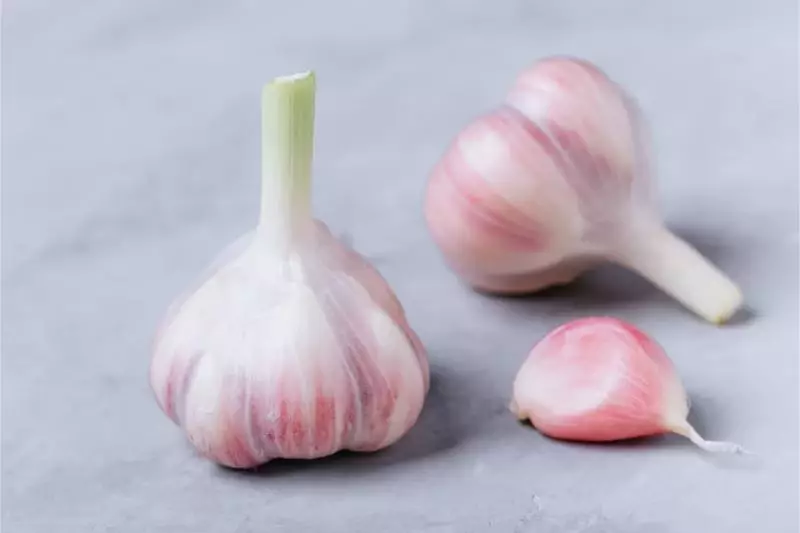
Care tips
- Watering: Keep the soil moist but not waterlogged.
- Mulch: Apply organic mulch like pea straw or lucerne to retain moisture and minimize weed competition.
For best results, plant your Rojo de Castro cloves from March to May. Protect your growing garlic from pests such as aphids, and common diseases like leek rust with regular care and crop rotation. When autumn rolls around and the leaves begin to die back, you'll know it's time to harvest your garlic bulbs.
With proper care, your Rojo de Castro garlic can be stored for over 12 months, ensuring a long-lasting supply for your kitchen. If you're short on garden space, don't worry—garlic grows well in containers, too.
Just remember to avoid overly wet conditions and give your garlic plenty of sun, and come summer, you'll have a bountiful harvest.
How deep to plant garlic
In Melbourne, plant garlic cloves 2–3 inches deep, with the pointed end facing up. Ensure they are spaced about 6 inches apart. This is suitable for Melbourne's climate, promoting good root establishment and growth.
When should you plant garlic
Plant garlic in Melbourne from March to May. This timing allows garlic to establish roots before winter, ensuring a robust growth in spring.
Protect your garlic from sudden temperature changes
In Melbourne, where weather can fluctuate, it's important to employ strategies to protect your garlic crop. Here are some protective measures you can take:
-
Mulching: Apply a thick layer of organic mulch, such as straw, hay, or leaves, around your garlic plants. Mulch acts as an insulator, keeping soil temperatures more stable and protecting roots from sudden temperature swings.
-
Windbreaks: Use windbreaks to shield your garlic plants from cold winds, which can exacerbate the effects of temperature drops. Temporary windbreaks can be made from burlap, cloth, or plastic sheeting supported by stakes.
-
Cloches and row covers: For small-scale gardens, individual cloches or floating row covers can provide a microclimate for your garlic plants, protecting them from sudden temperature drops. These can be made from various materials such as plastic or fabric.
-
Cold frames and greenhouses: If you have the resources, cold frames or greenhouses can offer the best protection against temperature fluctuations. They can be heated if necessary and will provide a controlled environment for your garlic.
-
Watering practices: Water your plants during the warmest part of the day so that they are not subjected to cold water during cooler temperatures. Additionally, avoid overwatering, as wet soil can get colder than dry soil.
-
Proper planting time: Plant your garlic at the right time in the season to ensure that it is well-established before the onset of extreme temperatures. In Melbourne, this typically means planting in late autumn.
-
Hardening off: If you start your garlic indoors or in a greenhouse, gradually acclimate the plants to outdoor conditions before transplanting them. This process, known as hardening off, will help reduce shock from sudden temperature changes.
